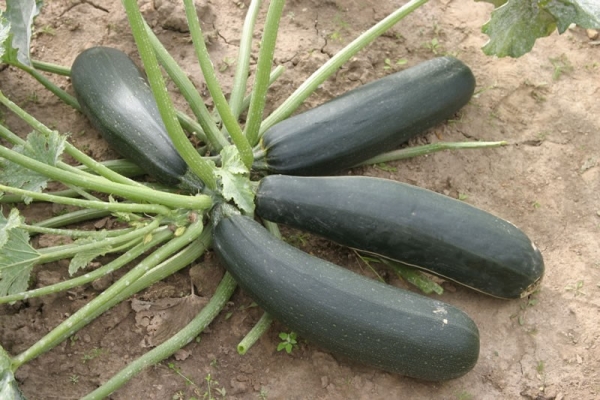"Without work and without charging, I put my heavy side on our garden bed - a strong, ripe zucchini." Zucchini - a vegetable of universal purpose, very popular among the people for unpretentiousness, productivity, ability to replace cucumbers in conservation in lean years “cucumber” years. With the onset of fruiting and throughout the summer season they find their use in the family menu. And if you choose the right variety, you can indulge yourself with squash dishes at least until the New Year. One of these long-term varieties is the Zabachok Black handsome.
Table of contents
Description and characteristics of zucchini zucchini Black handsome
Black handsome, like all zucchini, belongs to the pumpkin family. Zucchini squash Black handsome has a bush of a compact form, carved leaves on long petioles are decorated with white spotted stains.
Zucchini variety early ripening. Enters fructification for 45-55 day from the moment of emergence of shoots.
Fruits are smooth in size up to 25 cm and weighing up to 1 kg dark green, almost black, in color, hence the name of the variety. At the same time on the bush can be formed up to 5 fruits.
The peel of the fruit is thin and not hard, the flesh is white with green, tenderbut dense and juicy. Young green stuff with a very delicate and delicate flavor without cooking can be used in salads instead of cucumbers.
Zucchini Black Handsome - variety of foreign selection, adapted to the conditions of cultivation throughout Russia and neighboring countries.

Advantages and disadvantages
Black Handsome has no flaws, and advantages are:
- early ripening;
- excellent taste (thin skin and tender, juicy, dense flesh), excellent appearance;
- compactness of the bush and high yield allow to receive up to 20 kg of fruits from 1m2 of the area, and up to 10 kg from one bush;
- long period of fruiting;
- good transportability and keeping quality;
- universality of use.
Seed preparation for planting
Seed preparation for planting consists in:
- The seed quality test for germination consists in the selection of full-bodied seeds by sight and touch.
- Disinfection of seeds in a pink solution of potassium permanganate for 20 minutes, after which the seeds are washed in clean water.
- Pre-soak seeds in a growth stimulator or potassium humate for quick and consistent seed germination.
- The final stage of seed preparation is to place them in a damp cloth until the seeds hatch. This will take 2-5 days.
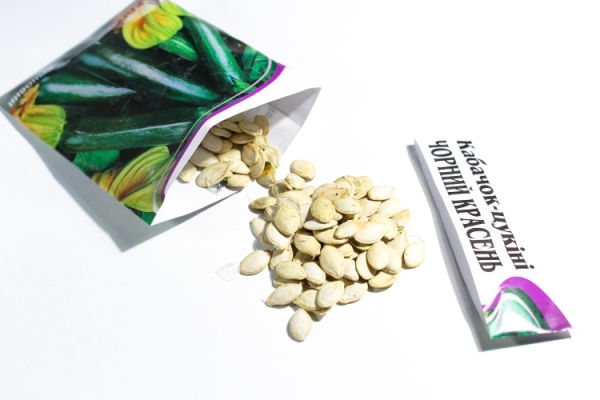
Soil preparation
Grow zucchini in well-lit areas with loose fertile soil.
Place selected for landing since autumn it is well charged with organic (manure, chicken droppings or humus) and dig.
You can do these beds in the spring, but then it is necessary to dig up small trenches, approximately on the bayonet of the shovel and all the organic matter put in them.
In the ground poured over organic matter, wells are made into which they add humus, wood ash, are well spilled with hot water, and seeds or seedlings are planted.
In such beds, thermophilic zucchini is warm and cozy. from the constantly coming from the depths of the beds from decaying organic heat and carbon dioxide. Squashes grow and bear fruit like yeast.
Also feel comfortable and compost plants.
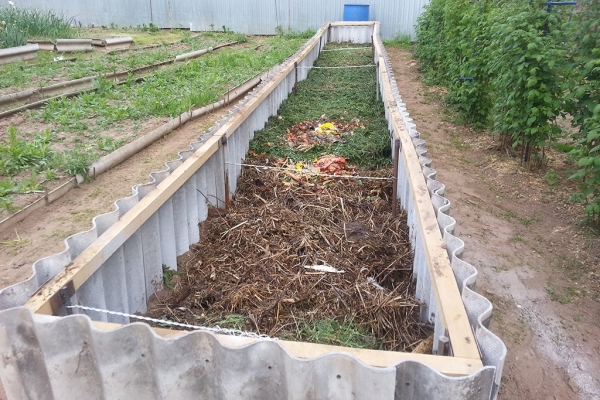
How to plant
You can grow zucchini directly sowing them in the ground or through seedlings. It all depends on the region of cultivation and the timing of the desired receipt of the first product.
And you can grow seedlings in April to plant it under the covering material and get the first harvest of Zelentsovo in May.
When the earth warms up and there is no threat of return frost, you can also plant the seeds immediately in the ground. Thus, the conveyor zucchini products you provided for the entire season until the frost.
Experienced growers believe that when sowing seeds immediately in the ground, the collected squashes are better and more lezhkoy.
With a seedling method of growing squash seeds for seedlings are sown for planting in open ground in March, for growing in greenhouses and greenhouses in February.
In seed tanks Ø not less than 10-15 cm planted 2 seeds, from the grown plants subsequently leave the strongest.
It is better to fill the container with soil for ½ so that if the plants are strongly elongated, the stem can be twisted neatly in a pot and covered with the seedbed leaves.
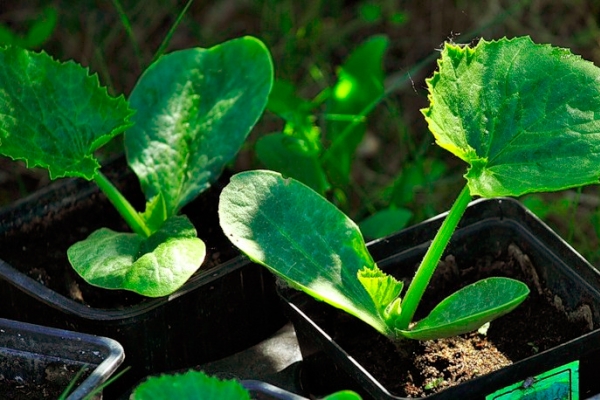
With the advent of the second true leaflet, the seedlings are ready for planting in greenhouses, greenhouses, or, if the weather permits, in open ground.
When sowing seeds in open ground it is necessary to take into account that the plant is thermophilic and planting is carried out at a soil temperature of + 10 ÷ + 15 ° С. The wells are poured with water, the seeds are put "on the flank". Depth of seeding is 3-4 cm.
Squashes can be grown tape or nested way. When planting ribbons the wells are made after 0.5 m, one plant is placed in each well.
Plants grow, so if several rows are planted, then the distance between the rows is at least 1 m.
In the nesting method In the nest have several plants, so the wells do after 1 m.
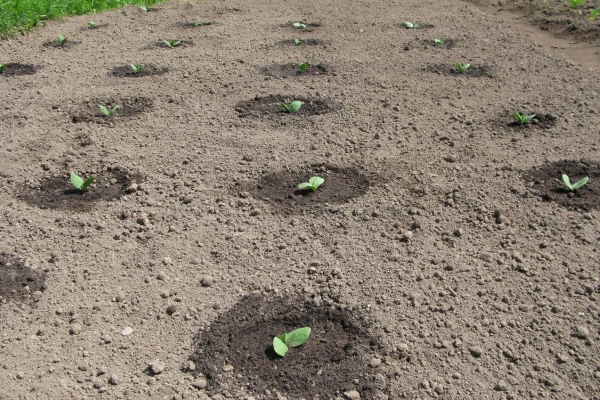
Care after
Further care of plants consists in watering, dressing and loosening.
Watering
They should be regular as the soil dries under the plants. Under the bush is poured at least 5 liters of water for one irrigation.
Water used for irrigation is warm.to avoid rotting of the ovaries and fruits. Excess moisture is also harmful to zucchini, it can lead to rotting of the roots and the development of fruit rot.
Feedings
They must be at least 3. The first is carried out before flowering. a solution of nitroammofoski 20-30 gr. 10 liters of water or infusion of mullein or bird droppings.
In the flowering period Potash phosphate fertilizers are applied (potash saltpeter, superphosphate 50 gr. per 10 liters of water). You can feed with potassium humate.
The third is performed during the formation of the ovary organic fertilizer with infusion of wood ash.
In the future, zucchini constantly bloom and bear fruit, plants spend a lot of energy on these processes. To maintain the viability of the plant every two to three weeks throughout the growing season, it is desirable to make organic fertilizers.

Forming and loosening
No zucchini forming, because the plant is a bush and does not branch especially, but it is necessary to remove the lower yellowing leaves, it is also necessary to remove empty flowers - flowers without ovaries.
Squashes are plants with a shallow root system, therefore loosening should be done very carefully in order to avoid damage to the roots.
Diseases and their prevention
Black handsome zucchini variety resistant to major diseases of the pumpkin family (powdery mildew, anthracnose, peronosporiozu).
But in order to prevent the need to adhere to a number of rules for growing plants:
- Observe crop rotation and not plant annually in the same place. Return to the original place zucchini need no earlier than 3 years.
- Watering should be moderate, since excessive soil moisture and high humidity under the plants provide a fertile environment for the development of microbes and infections.
- In order to prevent fungal and bacterial diseases, it is necessary to perform pre-plant disinfection of seeds.
- Observe the recommended planting schemes, avoiding their thickening.
- At the first signs of disease, remove the affected parts of plants or bushes completely, carrying them off the site and burn them.
- To process plants with chemicals intended for the treatment of this disease at the first symptoms of the disease.
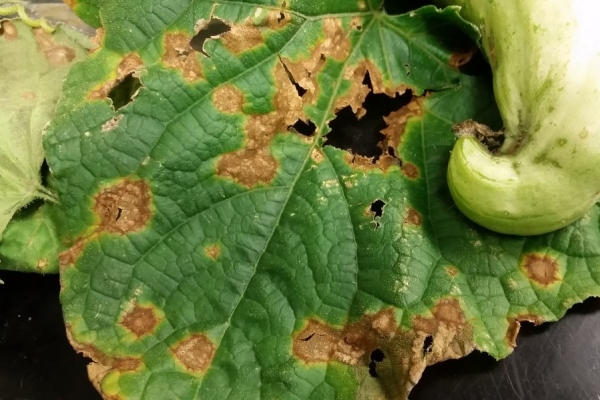
Harvesting and storage rules
It is necessary to collect zucchini regularly when fruits reach 15-20 cm, every 2-3 days, excluding their over-ripening. This will stimulate the development of new ovaries and fruits.
For long term storage take the fruits collected before the onset of frost weighing at least 1 kg.
Basic rules for storage zucchini to keep the harvest until spring:
- when harvesting, keep the stem length at least 5-10 cm;
- the ground is removed from the fruit with a dry cloth; no squash should be washed;
- zucchini should be kept open, storage in plastic bags is strictly contraindicated (condensate formed during storage leads to rotting of the fruit);
- vegetables should be stored in a dry, cool, dark place (basement, cellar, storage room), storage temperature + 4 ÷ + 10 ° C;
- at room temperature the shelf life of zucchini is 1-1.5 months.
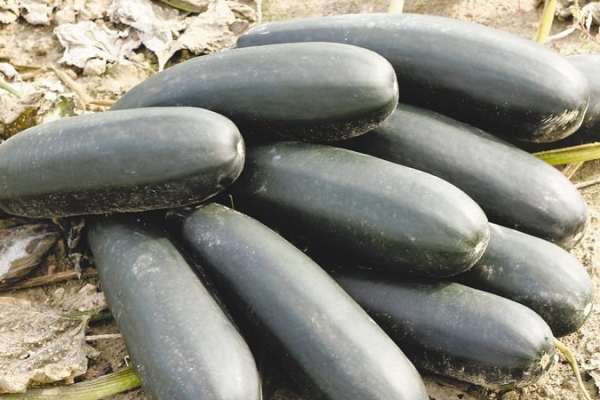
Not one gardener will deny himself the pleasure of growing zucchini in his area.
When choosing a variety, stop your eyes on the zucchini zucchini Black handsome, and he will not only please you, but will also surprise you with his yield, taste and external beauty.
